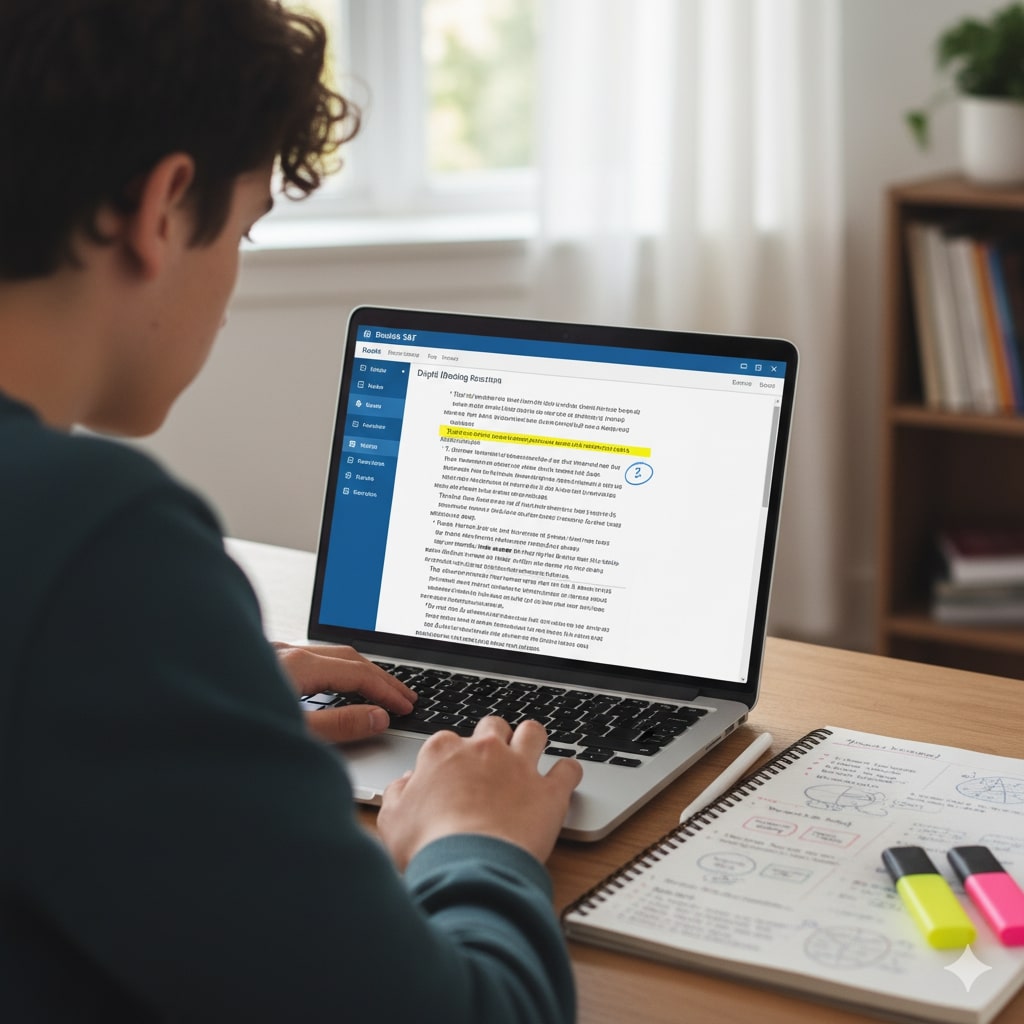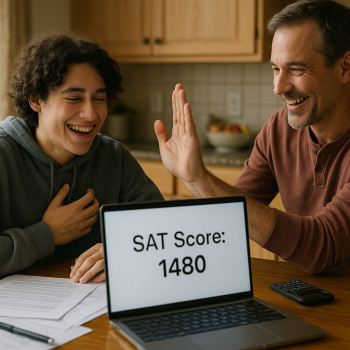Why historical context trips up so many students on the Digital SAT
If you’ve ever read a paragraph about a 19th-century political debate or an excerpt from a mid-20th-century diary and felt your brain stumble, you’re not alone. Historical context questions on the Digital SAT reading section invite you to step into a different time and make sense of language, assumptions, and references that aren’t part of everyday life. The twist? The digital format changes how those passages are presented and how you need to interact with them.
What we mean by “historical context” on the SAT
On the SAT, historical context shows up in two main ways. First, passages may come from—or imitate—historical writing: primary sources like speeches, letters, essays, or journalism from another era. Second, contemporary passages often refer back to historical events, ideologies, or figures as part of their argument. In both cases, the test asks you to interpret meaning, author perspective, vocabulary-in-context, or the role of a historical detail in the passage’s structure or argument.
Why the Digital SAT makes context feel different
Transitioning to the Digital SAT brought design changes that impact reading strategy. Instead of long blocks of text with multiple clustered questions, you’re more likely to see shorter passages and one-to-one pairing with targeted questions. That’s great for focus, but it also means:
- Passages may assume more background knowledge because questions are sharper and expect you to extract implied meaning quickly.
- The digital delivery often isolates a single historical detail and asks you to reason about its function—so you have less margin for re-reading the entire passage without losing time.
- Tools like on-screen highlighting and answer flags help, but you need deliberate techniques to use them effectively under adaptive timing and section structure.

Common traps students fall into with historical-context questions
Recognizing the traps is half the battle. Here are the missteps I see most often:
1. Confusing background knowledge with passage evidence
When a passage mentions an event you know something about, it’s tempting to rely on what you remember from history class. The SAT doesn’t reward outside knowledge. Your job is to use only the passage’s evidence. If you bring in your own facts, you may answer in a way that the passage itself doesn’t support.
2. Over-interpreting archaic language or tone
Older texts sometimes use phrasing that sounds formal or odd. That can feel like code. But most questions want you to interpret how the author uses language to achieve an effect—not to recreate a historian’s interpretation. Look for clues in nearby sentences: is the author praising, criticizing, or simply explaining?
3. Losing sight of question types (function vs. inference)
The SAT rotates between asking about the function of a detail (Why does the author mention X?) and asking for an inference (What can we conclude from X?). Confusing these will steer you to the wrong evidence. Always pause to label the question type before you hunt for the answer.
4. Rushing without making quick notes
Shorter passages can lull you into skimming. In digital format, skimming is riskier—because a single phrase may be the key. Invest a few seconds to write a two- or three-word margin note (on scratch paper or the device if allowed). It saves time when you return.
How to read historical passages strategically (step-by-step)
Here’s a practical routine you can use on test day. It’s short, repeatable, and designed for the digital environment.
Step 1 — Orient in 25–40 seconds
- Skim the title (if any), the first and last paragraphs, and the opening sentence of each paragraph.
- Ask: What is the author’s main point in one brief sentence? Where does the historical detail sit—example, contrast, background, or evidence?
Step 2 — Mark the key historical touchpoints (10–20 seconds)
- Underline dates, names, events, and words in unusual quotation or italics. These are likely to be referenced in questions.
- Write a quick label beside them: “example,” “tone shift,” “contradiction.”
Step 3 — Read the question, then pinpoint
After the quick scan, read the question and passage evidence together. The correct answer will almost always be directly supported by one or two nearby sentences. If a choice uses outside facts or leaps beyond the passage, eliminate it.
Step 4 — Use elimination ruthlessly
Many wrong choices are attractive because they’re partially true or they echo a familiar historical narrative. Cross out anything that introduces unsupported details, extremes, or absolute claims (always, never, clearly proves, etc.).
Step 5 — Check tone and function
If the question asks about tone or the function of a historical reference, compare the answer choices against the passage’s wording—not your emotional reaction to the historical content. Tone is about how the author treats the subject, not whether you like the subject.
Walkthrough example: a practice passage scenario
Let’s walk through a concise example (paraphrased for clarity): imagine a short passage by a reformer in 1892 describing factory conditions and referencing the “looming specter of mechanized labor.” The author then contrasts the “dignity of skilled hands” with “anonymous machines.”
Typical questions and how to approach them
- Question: What does the phrase “looming specter of mechanized labor” most nearly mean?
- Approach: Look at sentence context—‘looming’ signals threat; ‘specter’ implies something feared. Choose the option that conveys an approaching threat from machines, not a neutral technical term.
- Question: Why does the author contrast ‘skilled hands’ and ‘anonymous machines’?
- Approach: Determine the function: it’s to highlight a value judgment—preserving human skill versus dehumanizing work. Pick the answer that reflects this rhetorical purpose.
- Question: Based on the passage, what can be inferred about the author’s view of industrial progress?
- Approach: Infer from tone and contrast—author sees progress as mixed or negative in terms of human cost. Avoid choosing an answer that assumes the author rejects all technology, unless supported.
Notice how each correct choice is rooted in who the author is and how the passage frames historical detail—never in what you personally know about the Industrial Revolution.
Practical drills you can do this week
Improvement comes from focused practice. Here are drills tailored to historical-context agility.
Drill 1: Evidence-only summaries (10 minutes a day)
- Pick a paragraph from a historical passage. Write one sentence that summarizes what the paragraph proves using only words from the paragraph. This trains you to tether conclusions to passage language.
Drill 2: Tone-mapping (15 minutes)
- Highlight every word that signals tone (e.g., charged adjectives, contrast words, irony markers). Create a short map: paragraph 1 = ironic, paragraph 2 = defensive. This helps you spot subtle author stance shifts that SAT questions love.
Drill 3: Function flashcards (20 minutes)
- Write quick prompts: “Why mention X?” or “What role does Y serve?” Pull passages randomly and answer in one line. Over time you’ll develop an instant sense for functions like evidence, background, concession, or foreshadowing.
Managing time and stress on test day
Historical passages can feel daunting, but time pressure is manageable with a plan.
Tip: Use the digital tools—wisely
Bluebook and other digital test platforms let you highlight and flag. Use highlighting to mark the passage’s single most important sentence (often in the opening or closing), and flag questions you want to return to. Don’t highlight everything—be selective.
Tip: Two-pass strategy
- First pass: Do the passages that feel quickest or most familiar. On the Digital SAT, shorter passages mean you can often earn easy points fast.
- Second pass: Revisit flagged or denser historical passages with fresh focus and the time you need to slow down.
Tip: Stay evidence-first when anxious
If your heart starts racing when you see a dated passage, slow down and find a sentence that directly mentions the historical detail in question. Anchoring to evidence calms overthinking.
A compact table: how to treat common historical-context question types
| Question Type | What it asks | Key clue words | Fast strategy |
|---|---|---|---|
| Vocabulary in context | Meaning of a word or phrase as used in the passage | “most nearly means”, “in this context” | Paraphrase surrounding sentence; eliminate choices with outside meanings |
| Function of detail | Why the author included a historical reference | “serves to”, “in order to”, “primarily” | Find adjacent sentences and label the detail’s role |
| Tone or attitude | Author’s stance toward the historical subject | “tone”, “attitude”, charged adjectives | Note connotative language and contrasts |
| Inference | What can be concluded based on passage evidence | “suggests”, “implies”, “most likely” | Support inference with explicit phrases from text |
| Author perspective | Author’s background or bias as revealed by the text | “author”, “speaker”, first-person statements | Consider word choice that reveals affiliation or motive |
How personalized tutoring speeds up progress (a natural mention of Sparkl’s approach)
Practicing alone builds baseline skills, but targeted coaching multiplies gains. Personalized tutoring—like Sparkl’s one-on-one guidance—can help you identify the exact kinds of historical-context questions that trip you up, and create a tailored study plan that fits your schedule. An expert tutor will show you how to read with a historian’s eye without needing to be a historian, and AI-driven insights in modern tutoring platforms can flag recurring error patterns so you focus on the highest-impact work.
What a few sessions can do
- Diagnose whether you’re losing points to vocabulary, inference, or misreading author attitude.
- Build micro-lessons—three-minute routines you can use on any passage to find the ‘right’ evidence faster.
- Offer practice tests with rapid feedback so you learn the digital interface while strengthening reading strategy.
Comparisons and real-world context: reading like a historian vs. reading for the SAT
It helps to be explicit about the difference between reading history as an academic pursuit and reading history for the SAT.
Reading like a historian
- Seeks wide context, external cross-referencing, and nuanced interpretations.
- Uses outside sources to build a complex narrative and argues from multiple angles.
Reading for the SAT
- Focuses on what the passage itself says—not what other sources say.
- Looks for textual evidence, clear rhetorical roles, and answer choices that are explicitly supported by the passage.
You won’t be penalized for knowing a lot of history, but the SAT rewards discipline: keep the test’s “evidence only” rule front and center when you mark your answers.
When to bring outside knowledge (almost never) and how to use it wisely
There’s a short list of safe moments to use outside knowledge on the SAT: when it helps you understand a reference word that the passage itself clarifies, or when it helps you parse a name that the passage defines. Even then, treat outside knowledge like seasoning—use it to clarify, not to replace passage evidence.
Final checklist for the week before your test
- Practice five short historical passages and time yourself doing the 2-pass method.
- Do one tone-mapping drill every other day to sharpen sensitivity to rhetoric.
- Take a full-length digital practice test under timed conditions at least once—simulate device setup and highlight/flag techniques.
- If possible, schedule a focused session with an expert tutor to review a weak area. Sparkl’s personalized tutoring can be a helpful, natural fit here: targeted 1-on-1 sessions and data-backed study plans accelerate improvement without overwhelming you.
- Sleep well the night before. Fatigue makes nuance vanish.

Parting thought: historical context is a muscle, not a mystery
Historical context questions look intimidating because they dress up reasoning in old-fashioned language and dates. But the logic the SAT is testing is steady: locate evidence, interpret language in context, and choose the answer most directly supported by the passage. With the digital format, speed and precision matter more than ever. Practice the routine above, do short, focused drills, and—if you want to accelerate—get a few sessions of targeted tutoring to personalize the plan. You’ll find that passages that once felt like puzzles start to feel like predictable, conquerable tasks.
Ready to start?
Pick a short historical passage today, apply the 25–40 second orientation, mark the key touchpoints, and try the two-pass method with one practice question. Repeat this consistently for a week, and you’ll notice your accuracy and confidence climb. The Digital SAT rewards smart habits—build them now, and the test becomes less about remembering the past and more about reading the present with clarity.
Good luck, and remember: a strong strategy turns historical context from a trick into an advantage.















No Comments
Leave a comment Cancel